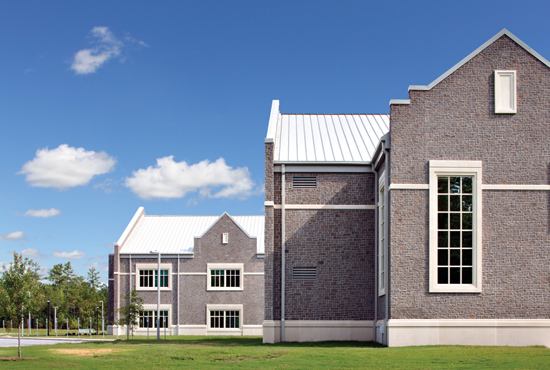Masonry Meets New Energy Codes
Learning Objectives:
- Discuss the exterior wall requirements and compliance options of the 2012 IECC.
- Describe continuous insulation as a means of reducing energy costs.
- Identify which masonry wall systems offer continuous insulation to meet the objectives of new legislation.
- Compare the benefits and limitations of new and old masonry wall systems in terms of meeting today’s codes and energy initiatives.
Credits:
The term “masonry” refers to construction with stone, and it has been around for centuries, from the pyramids to the Coliseum to the magnificent cathedrals of Europe. Masonry by its very nature conveys permanence and quality, and its attributes are well recognized. Masonry is structurally sound, withstanding wind loads and gravity loads. It is fire resistant. Acoustically, it confers peace and quiet, and it provides good moisture control and thermal performance. In short, masonry endures.
Over the years, masonry has evolved as a result of better quality control, improved construction methods, enhanced design, and a deeper understanding of the material's fundamental properties, and in modern times, continues to be identified with longevity and low life-cycle cost. To today's buildings, masonry brings durability, value, and aesthetics. Many structures incorporate a wide spectrum of compatible masonry components from split face concrete masonry units (CMU) and cast-in-place concrete to pre-cast elements and concrete pavers.
To big box stores, masonry offers durability and value. In renovations, it provides an attractive and practical re-cladding material. And the designer's palette is not limited to exterior applications—many interiors incorporate the aesthetic and practical appeal of the material.
Now masonry is poised for another major evolutionary step—to meet changing energy codes. As society moves towards sustainable building, energy codes are becoming ever more demanding. Rising to the challenge of stricter regulations, manufacturers are working to develop new, more insulated masonry systems with better thermal performance. This article will discuss the changing green building picture, focusing on new requirements in the International Energy Conservation Code (IECC). Compliance options for masonry will be identified, with particular emphasis on foam wall panel systems.
 |
Among the requirements of today’s energy codes are higher R–values and continuous insulation. Photo courtesy of Oldcastle® Architectural |










